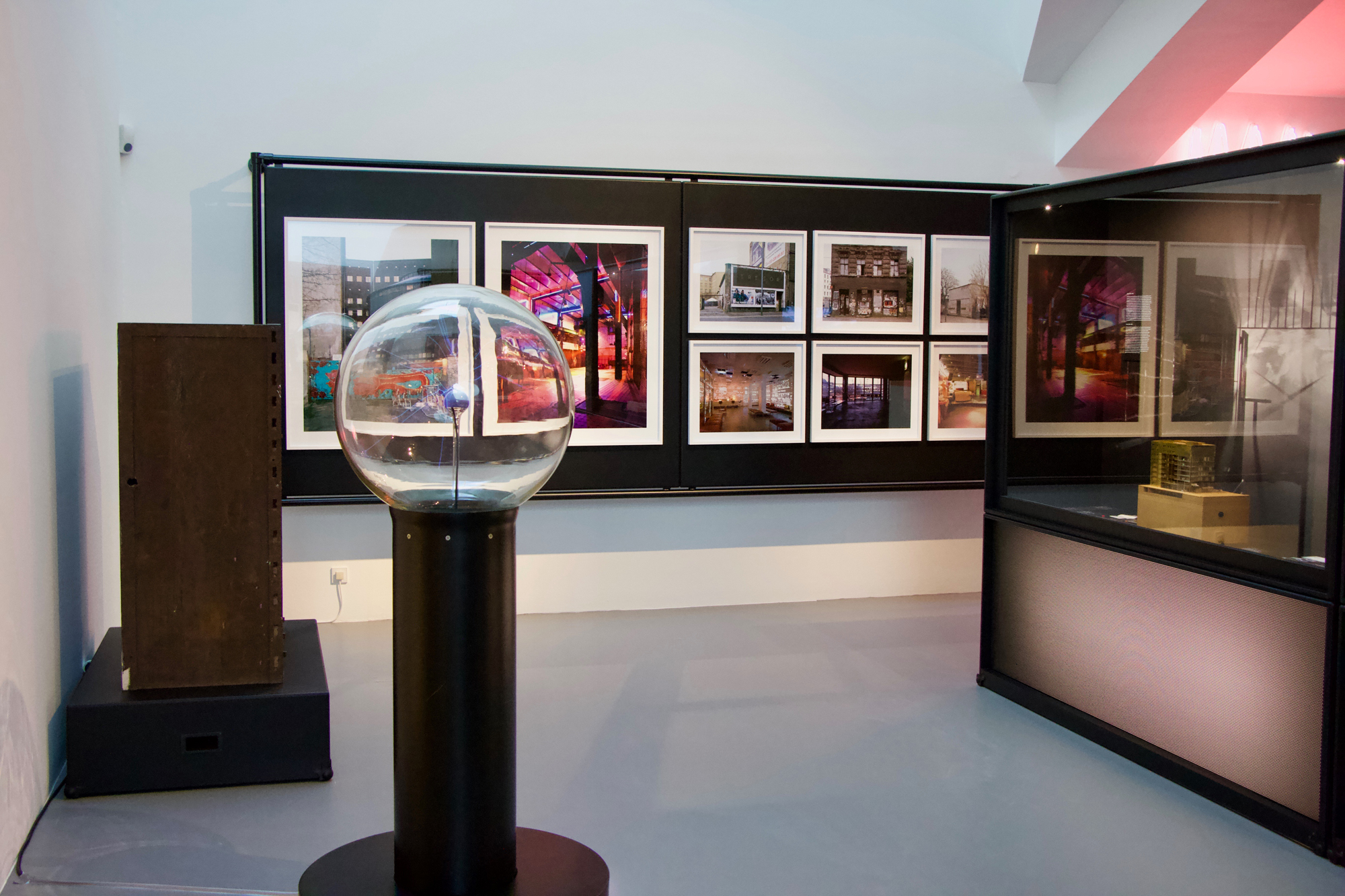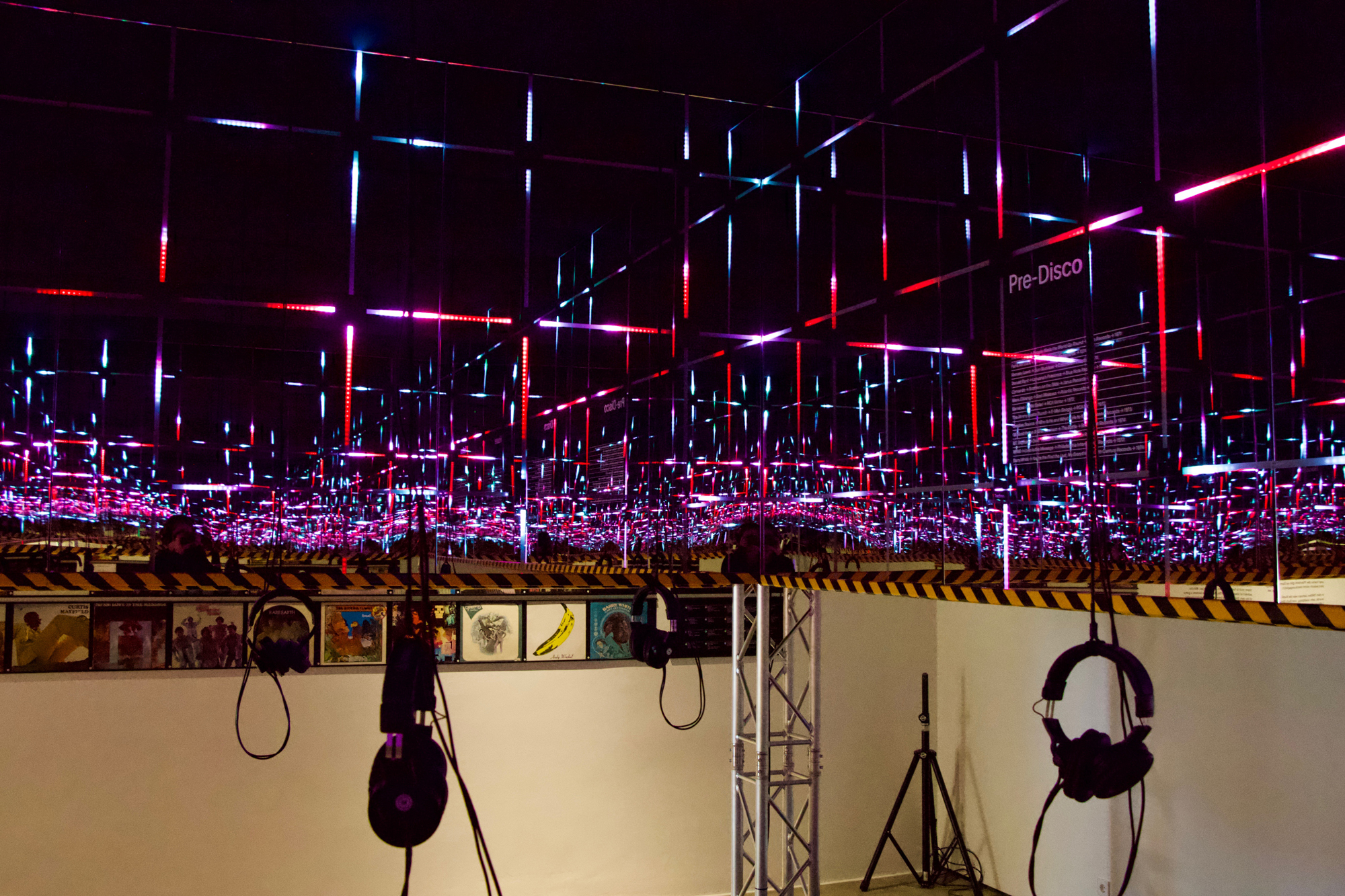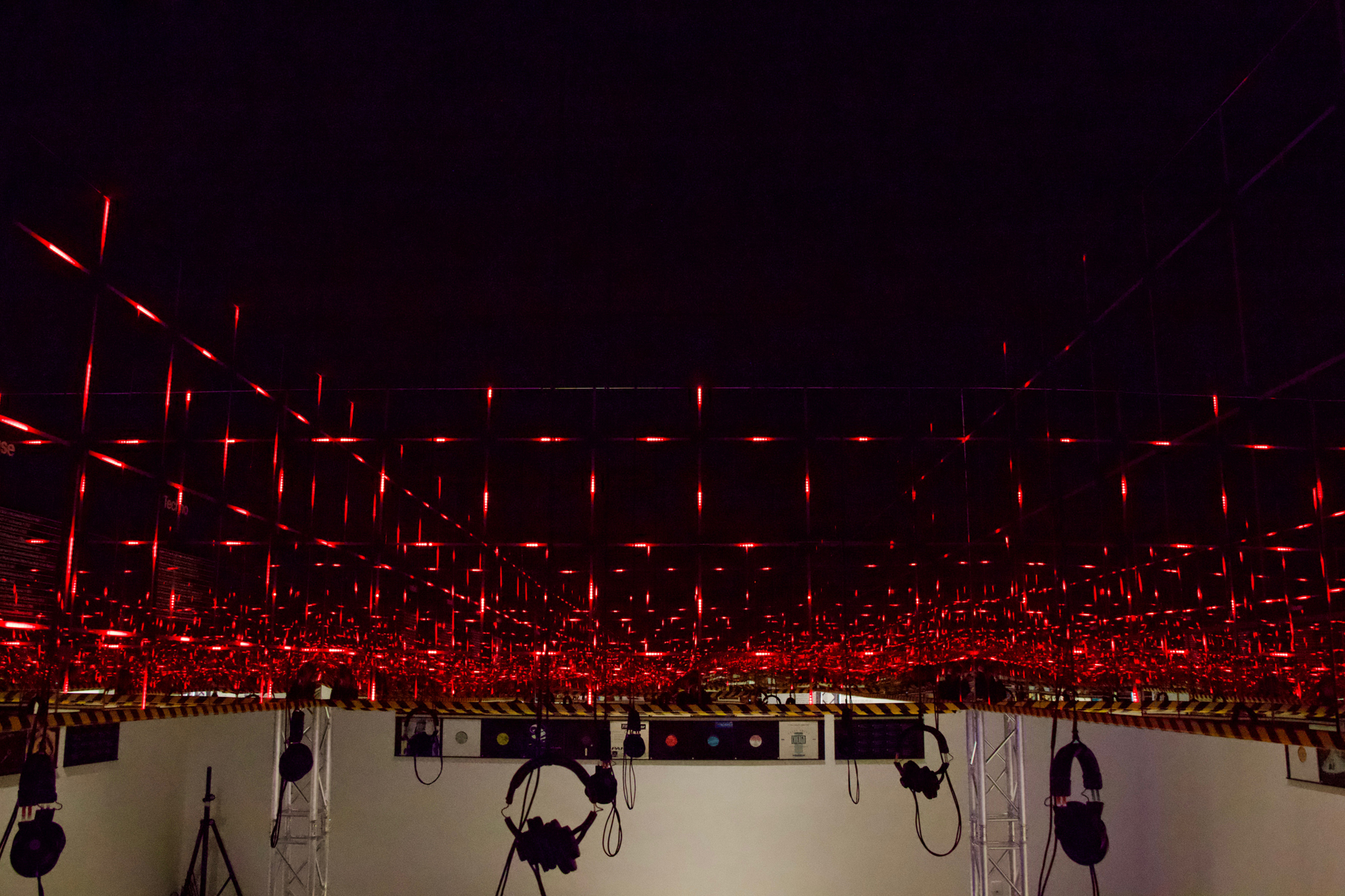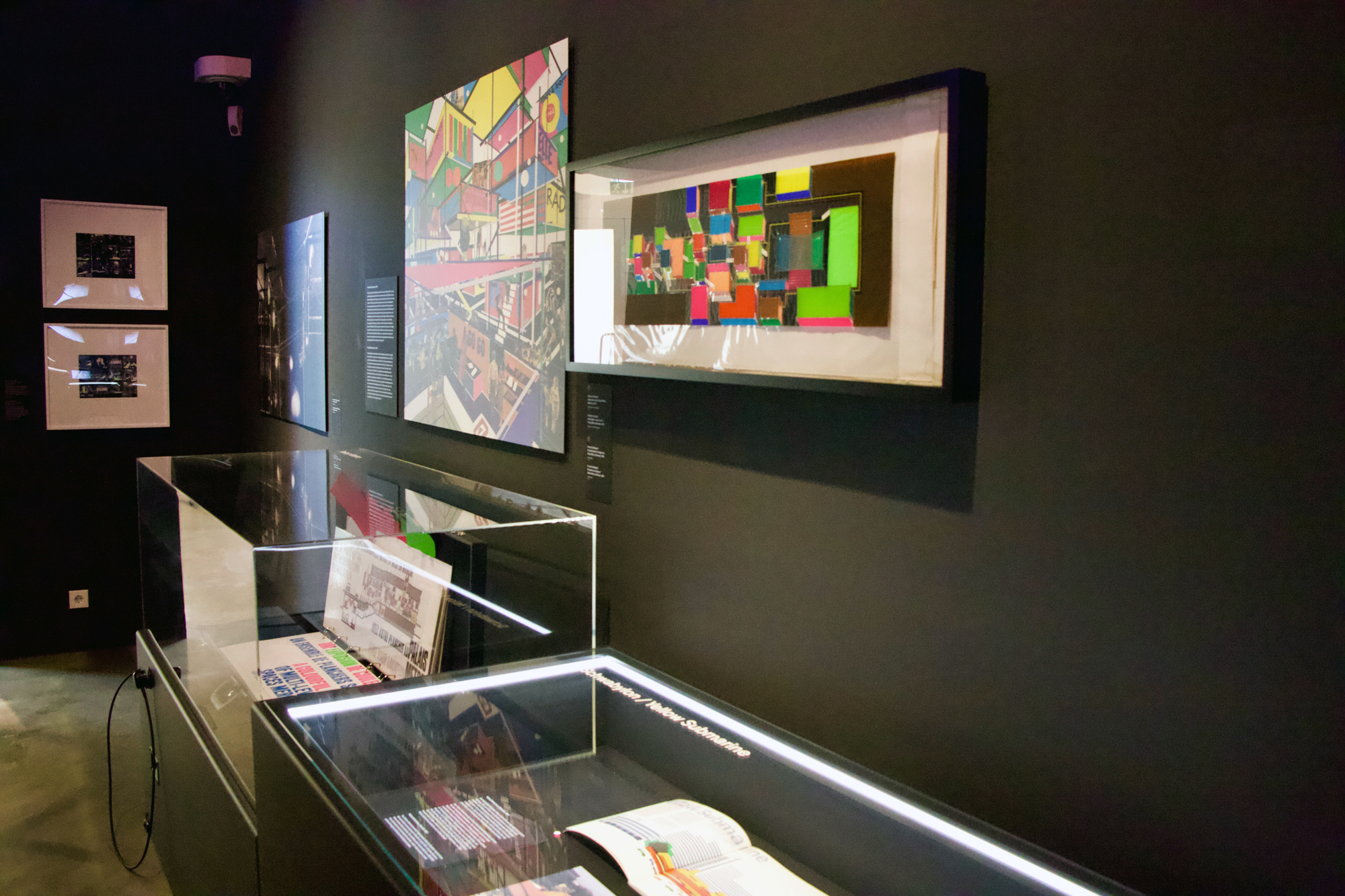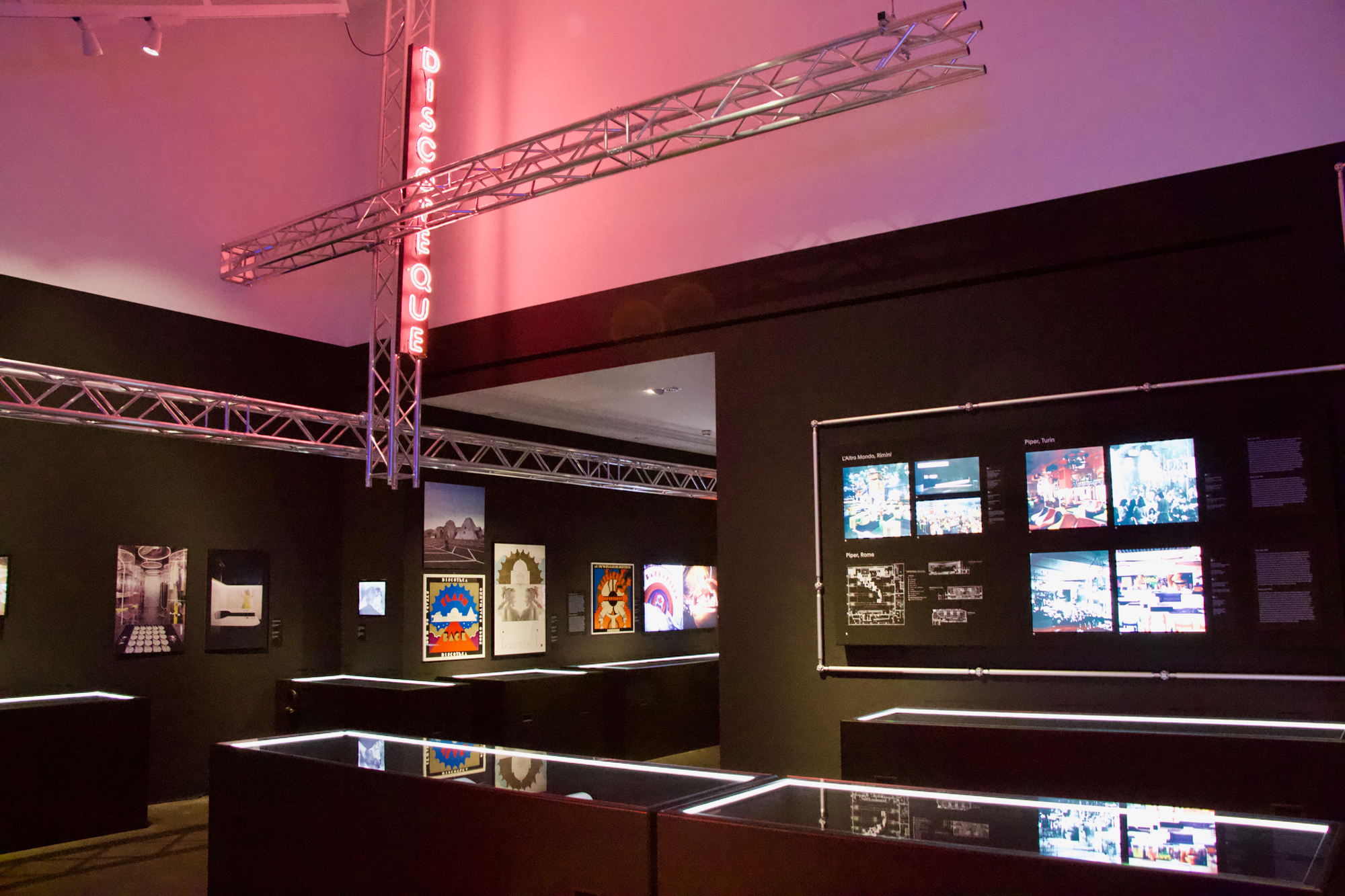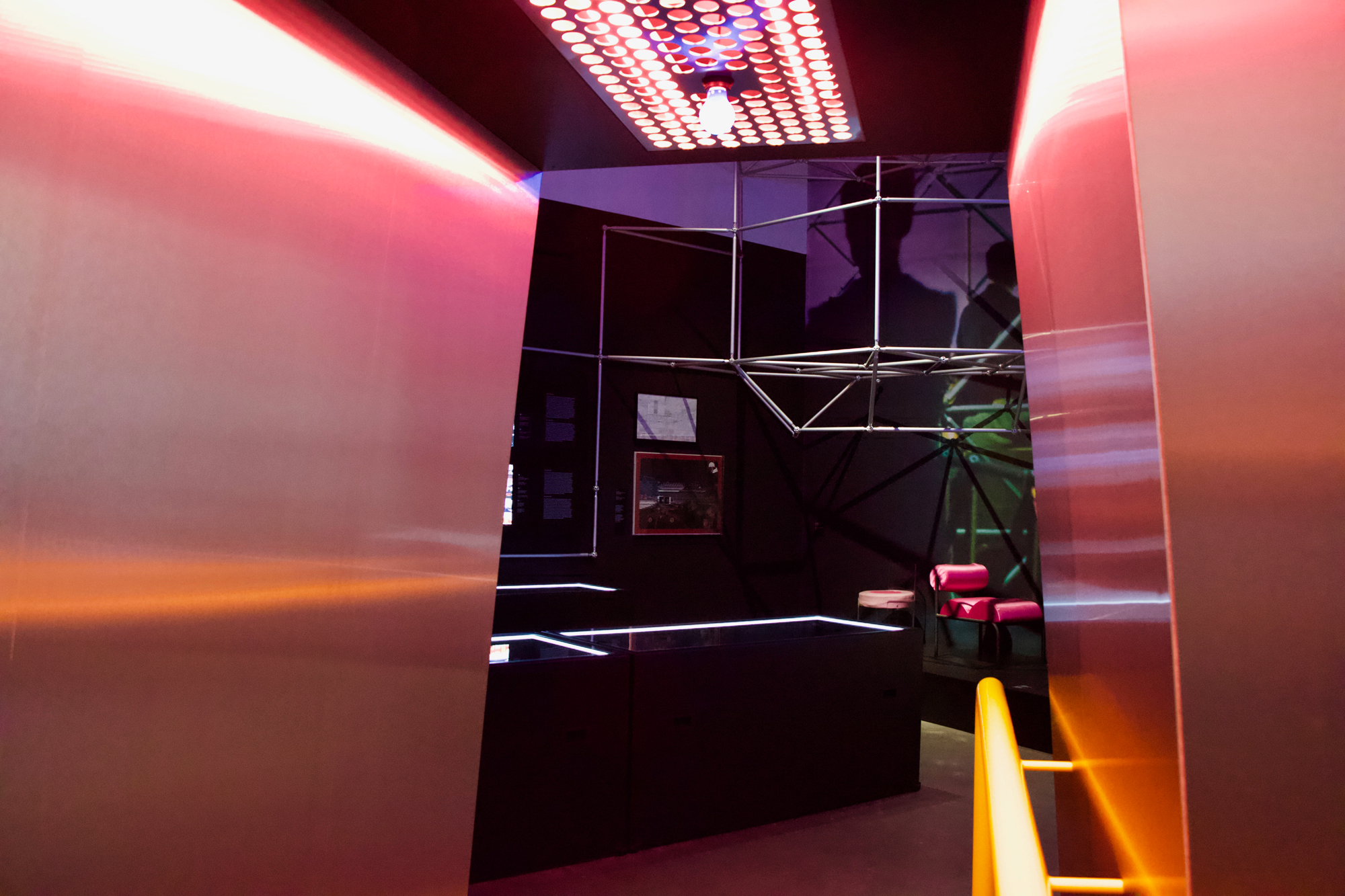Night Fever: Exhibition at Vitra Design Museum
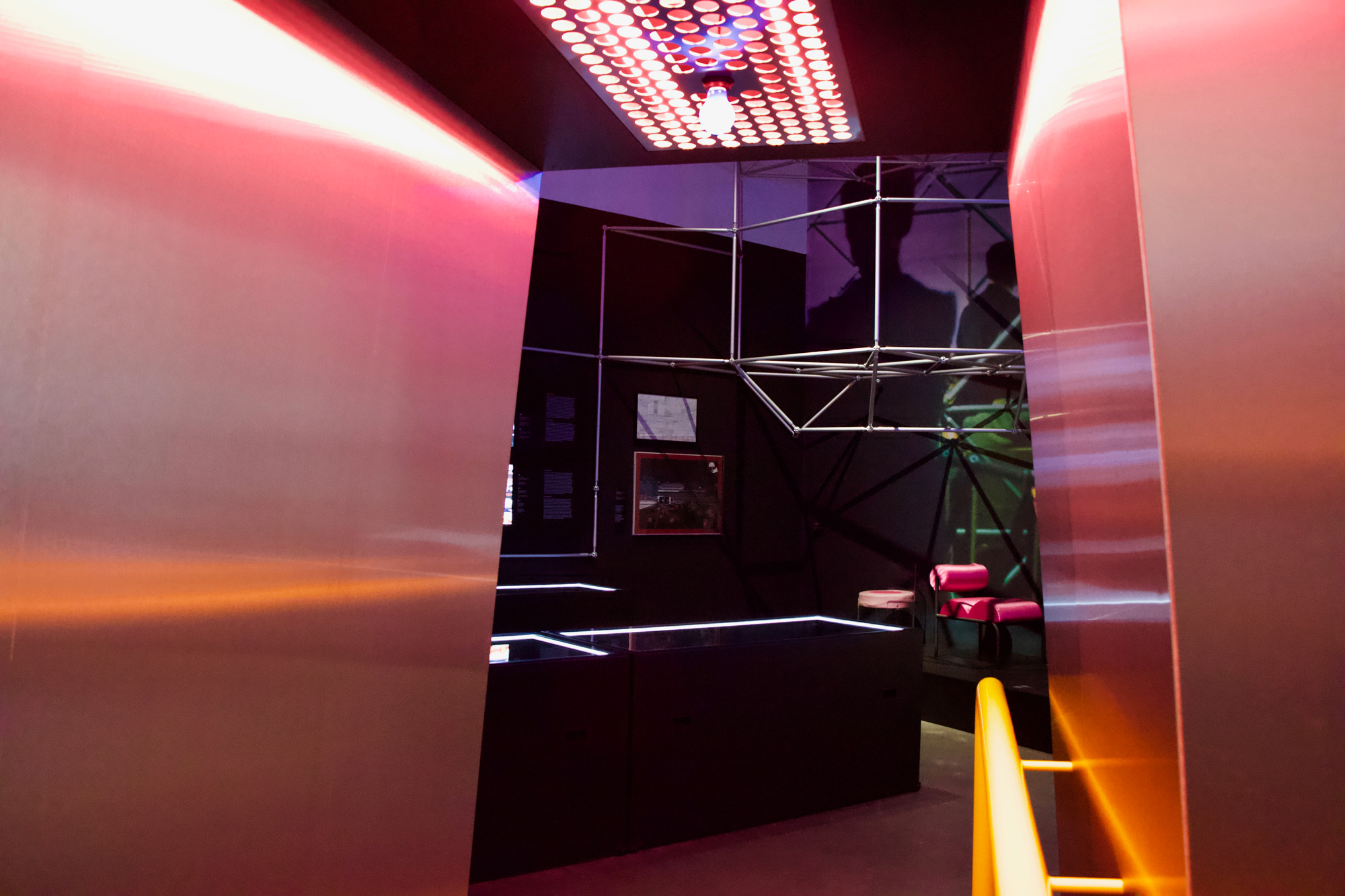
The phenomenon of disco began in the 1960s to break with social norms and create a new reality. Clubs were and still are a way for artists to live out their creative ideas and explore new dimensions.
The exhibition at the Vitra Design Museum in Weil am Rhein presents a chronological history of the nightclub, beginning in Italy with representatives of Radical Design, and ending with the latest designs and developments, such as the “Mothership” mobile DJ booth. The museum has four rooms dedicated to the exhibition.
Visitors enter through a zigzag corridor bathed in pink light, which is modelled after a club from the 1960s. The first room looks at the nightclub as a new spatial concept and alternative to the conservative establishment. Pedestals hold pieces of furniture that were specially designed for specific interiors, such as the Module 400 swivel chair by Roger Talon, whose square base could be perfectly integrated into the floor tiling at a nightclub in Paris.
On display in glass vitrines and on the walls are flyers, plans and photos depicting the inner life of clubs, especially in Italy, where the disco movement was particularly lively in the 1960s. Most of the exhibition walls are dark, as is often the case in bars and clubs – with accents set by neon signs or a coloured wall element, in addition to some of the very colourful materials implemented.
The second part of the exhibition features an interactive installation by Konstantin Grcic, the exhibition architect, and lighting designer Matthias Singer. It shows the varied evolution of club music, accompanied by precisely timed lighting effects. Record covers on the walls show how music and graphics have combined to form an impressive aesthetic. Visitors can immerse themselves in the installation by putting on a pair of headphones and losing themselves in the music and light, just like being at a wild party. The largest room of the exhibition looks at the 1970s, when clubs were already established in city nightlife and enjoyed high popularity. Discos were often opened in old theatres or cinemas, and offered a platform for designers such as Vivienne Westwood or artists such as Keith Haring. Visitors can also view dance scenes from the 1977 film “Saturday Night Fever” starring John Travolta. Not only did the film mark the height of the disco wave; it also sparked a counter-movement. The so-called “Disco Demolition Night” exploded disco records in a radical stance against the trend. Video documentation of the event is presented opposite the film excerpts, as if in an eternal duel. Clothes along with a medley of sometimes very unusual party invitations are also on display.
The last part of the exhibition on the upper floor of the museum shows recent developments in discos from the 1990s to the present. Clubs are being increasingly displaced from urban centres, forcing them to become more mobile and flexible in concept. Established and emerging architects alike have dealt with the nightclub as its own architectural genre, exploring new approaches from festival architecture to mobile sound systems and pop-up clubs.
Famous architectural firms such as OMA have also addressed the topic. In 2015 they submitted a proposal for one of the world’s most famous clubs, the Ministry of Sound in London.
One thing is certain: discos have their place in the culture of every metropolis and have lost none of their fascination to this day.
Visitors enter through a zigzag corridor bathed in pink light, which is modelled after a club from the 1960s. The first room looks at the nightclub as a new spatial concept and alternative to the conservative establishment. Pedestals hold pieces of furniture that were specially designed for specific interiors, such as the Module 400 swivel chair by Roger Talon, whose square base could be perfectly integrated into the floor tiling at a nightclub in Paris.
On display in glass vitrines and on the walls are flyers, plans and photos depicting the inner life of clubs, especially in Italy, where the disco movement was particularly lively in the 1960s. Most of the exhibition walls are dark, as is often the case in bars and clubs – with accents set by neon signs or a coloured wall element, in addition to some of the very colourful materials implemented.
The second part of the exhibition features an interactive installation by Konstantin Grcic, the exhibition architect, and lighting designer Matthias Singer. It shows the varied evolution of club music, accompanied by precisely timed lighting effects. Record covers on the walls show how music and graphics have combined to form an impressive aesthetic. Visitors can immerse themselves in the installation by putting on a pair of headphones and losing themselves in the music and light, just like being at a wild party. The largest room of the exhibition looks at the 1970s, when clubs were already established in city nightlife and enjoyed high popularity. Discos were often opened in old theatres or cinemas, and offered a platform for designers such as Vivienne Westwood or artists such as Keith Haring. Visitors can also view dance scenes from the 1977 film “Saturday Night Fever” starring John Travolta. Not only did the film mark the height of the disco wave; it also sparked a counter-movement. The so-called “Disco Demolition Night” exploded disco records in a radical stance against the trend. Video documentation of the event is presented opposite the film excerpts, as if in an eternal duel. Clothes along with a medley of sometimes very unusual party invitations are also on display.
The last part of the exhibition on the upper floor of the museum shows recent developments in discos from the 1990s to the present. Clubs are being increasingly displaced from urban centres, forcing them to become more mobile and flexible in concept. Established and emerging architects alike have dealt with the nightclub as its own architectural genre, exploring new approaches from festival architecture to mobile sound systems and pop-up clubs.
Famous architectural firms such as OMA have also addressed the topic. In 2015 they submitted a proposal for one of the world’s most famous clubs, the Ministry of Sound in London.
One thing is certain: discos have their place in the culture of every metropolis and have lost none of their fascination to this day.
Additional information:
Curators: Jochen Eisenbrand, Catharine Rossi, Katharina Serulus
Design: Konstantin Grcic
Graphics: Daniel Streat, Visual Fields
Lighting design: Matthias Singer
Design: Konstantin Grcic
Graphics: Daniel Streat, Visual Fields
Lighting design: Matthias Singer

